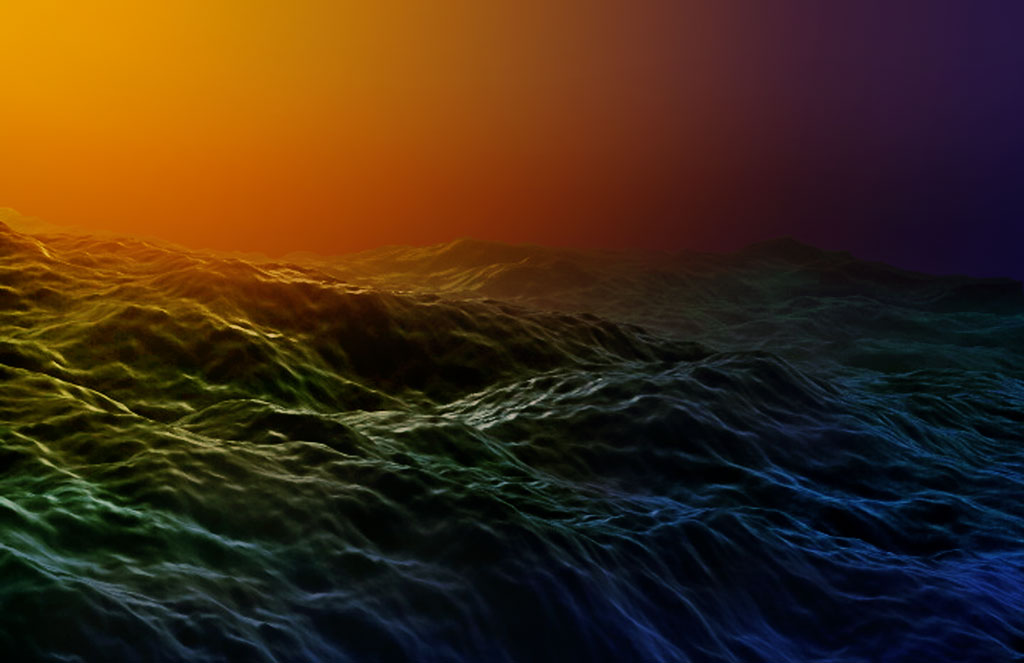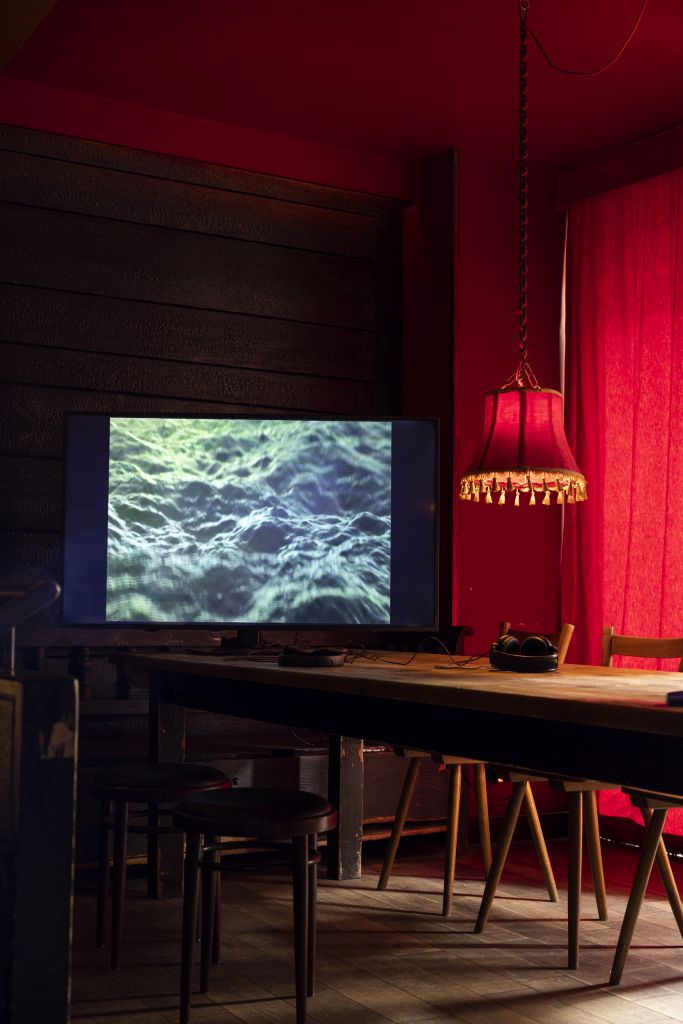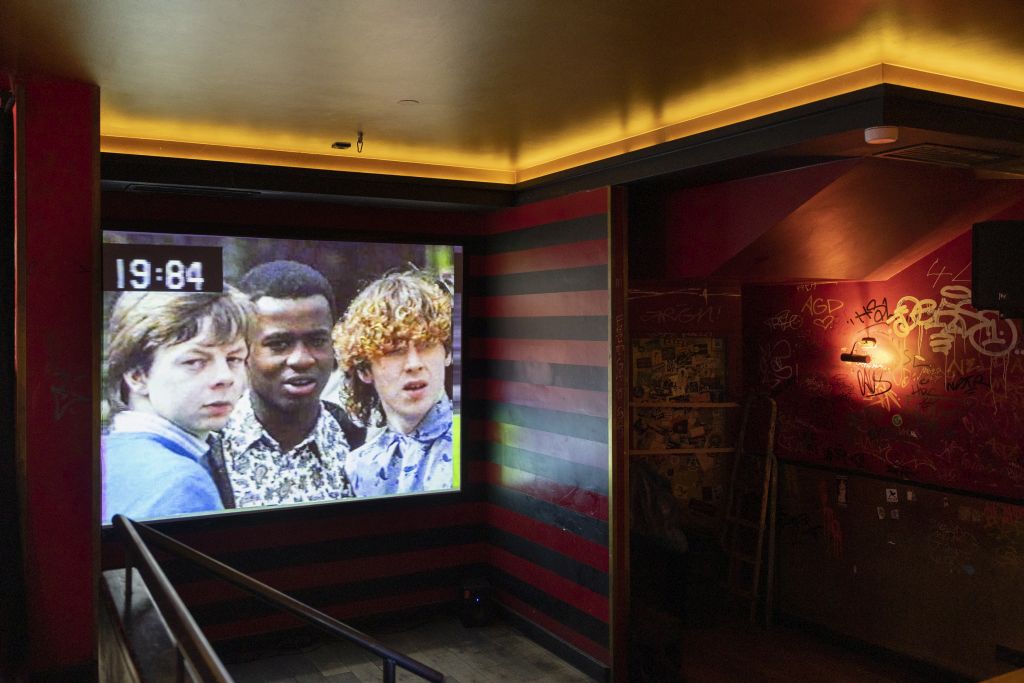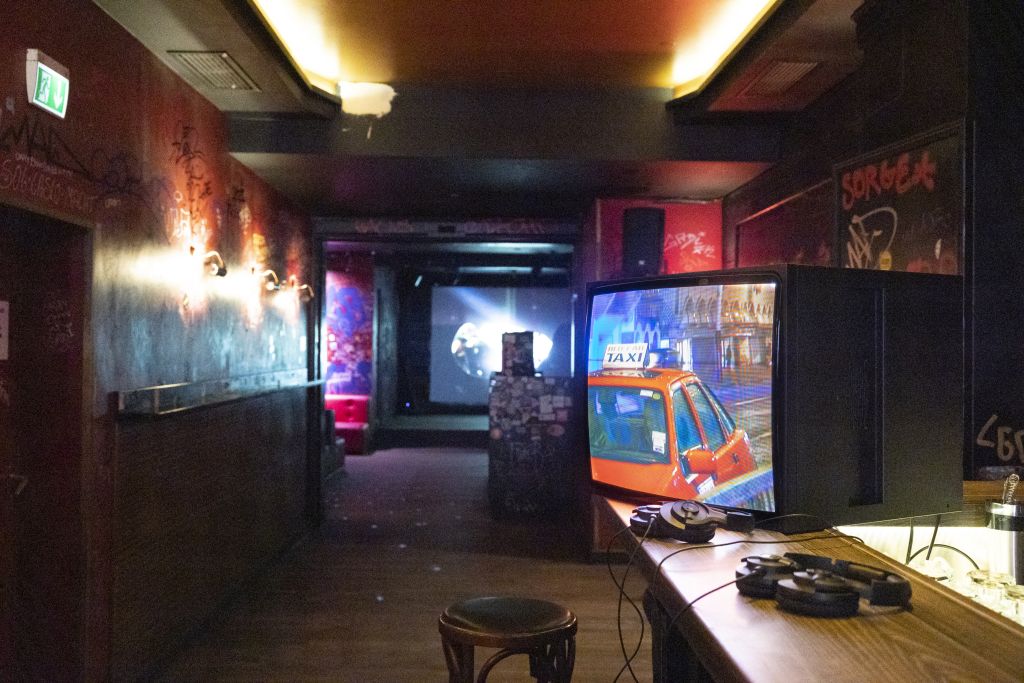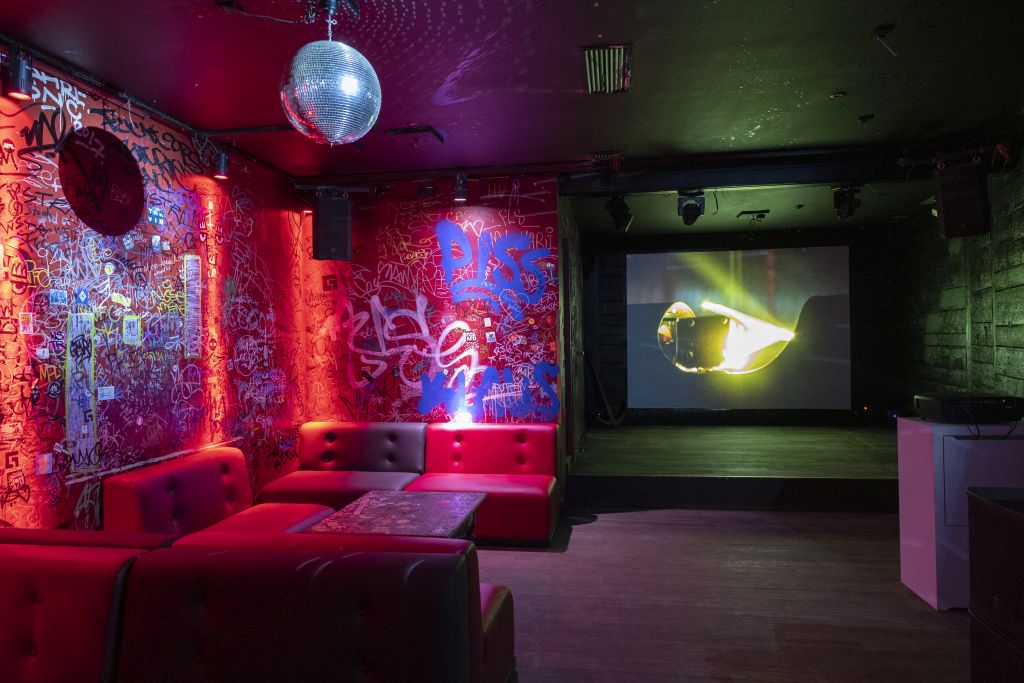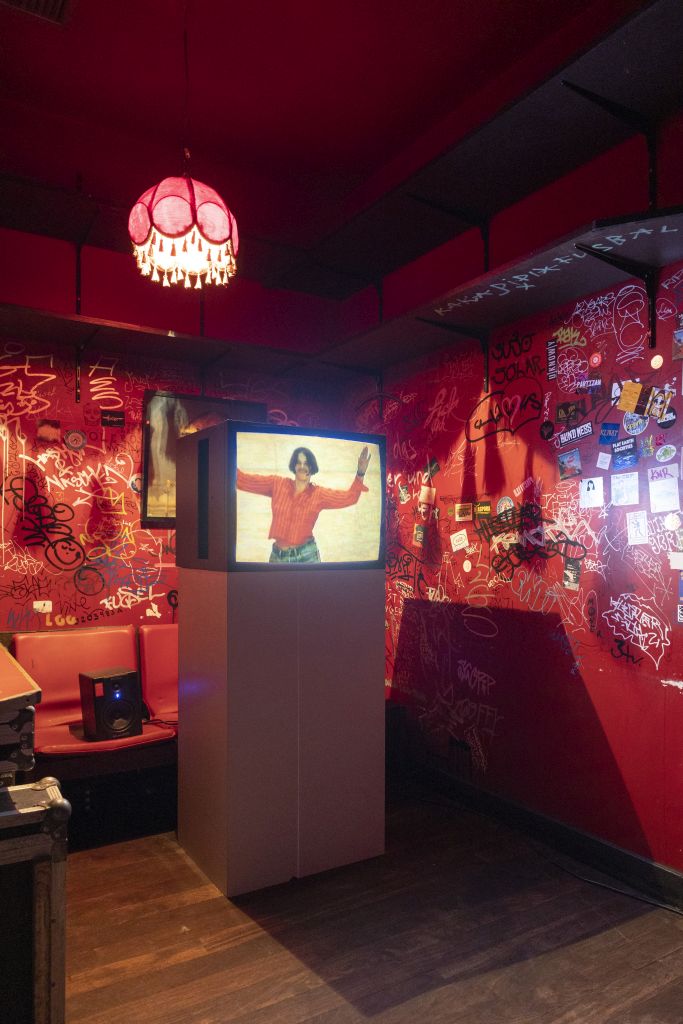Pleasure Beach
February 5 – March 6, 2022 | Sammlung Goetz Unter Deck
Since the outbreak of the corona pandemic, clubs in Munich have been largely closed. A melancholic mood has set in, and we wonder if and when we will be able to party like we used to. The Sammlung Goetz uses this situation as an opportunity to present a selection of videos and installations by artists whose work explores club culture from the 1980s to the 2000s. The focus is not only on different musical genres, dance styles and fashions; questions of sexuality, gender and identity are also considered. Young adults and teenagers in particular test and exceed limits during wild club nights, fueled by the sound, the intoxication and the community. The Sammlung Goetz presents the artworks in Unter Deck, a club in Munich established in 2013. Its walls are covered with inscriptions and graffiti, and its worn, imitation leather sofas and scratched up bar counters testify to long club nights, evoking memories of better times.
Artists: Tracey Emin, Nina Könnemann, Mark Leckey, Seth Price and Wolfgang Tillmans
Curator: Cornelia Gockel
